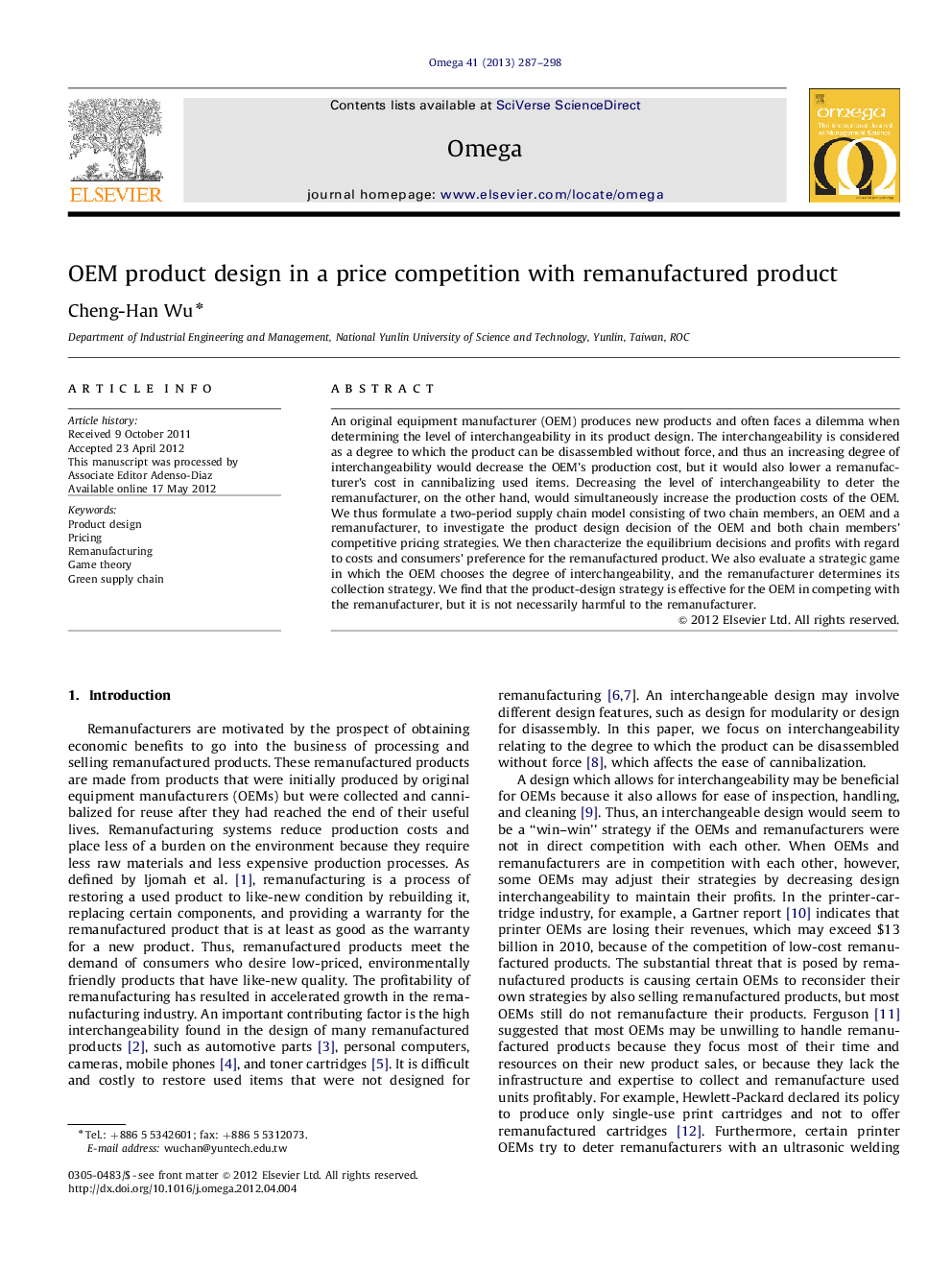| Article ID | Journal | Published Year | Pages | File Type |
|---|---|---|---|---|
| 1032660 | Omega | 2013 | 12 Pages |
An original equipment manufacturer (OEM) produces new products and often faces a dilemma when determining the level of interchangeability in its product design. The interchangeability is considered as a degree to which the product can be disassembled without force, and thus an increasing degree of interchangeability would decrease the OEM's production cost, but it would also lower a remanufacturer's cost in cannibalizing used items. Decreasing the level of interchangeability to deter the remanufacturer, on the other hand, would simultaneously increase the production costs of the OEM. We thus formulate a two-period supply chain model consisting of two chain members, an OEM and a remanufacturer, to investigate the product design decision of the OEM and both chain members' competitive pricing strategies. We then characterize the equilibrium decisions and profits with regard to costs and consumers' preference for the remanufactured product. We also evaluate a strategic game in which the OEM chooses the degree of interchangeability, and the remanufacturer determines its collection strategy. We find that the product-design strategy is effective for the OEM in competing with the remanufacturer, but it is not necessarily harmful to the remanufacturer.
► Strategic interaction between an OEM's product design and a remanufacturer's collection. ► Examination of a price competition between an OEM and a remanufacturer. ► Analysis of effects of the OEM's product design on equilibrium decisions. ► Finding that product design is effective for OEMs to compete with remanufacturers. ► Finding that product design is not necessarily harmful to remanufacturers.
